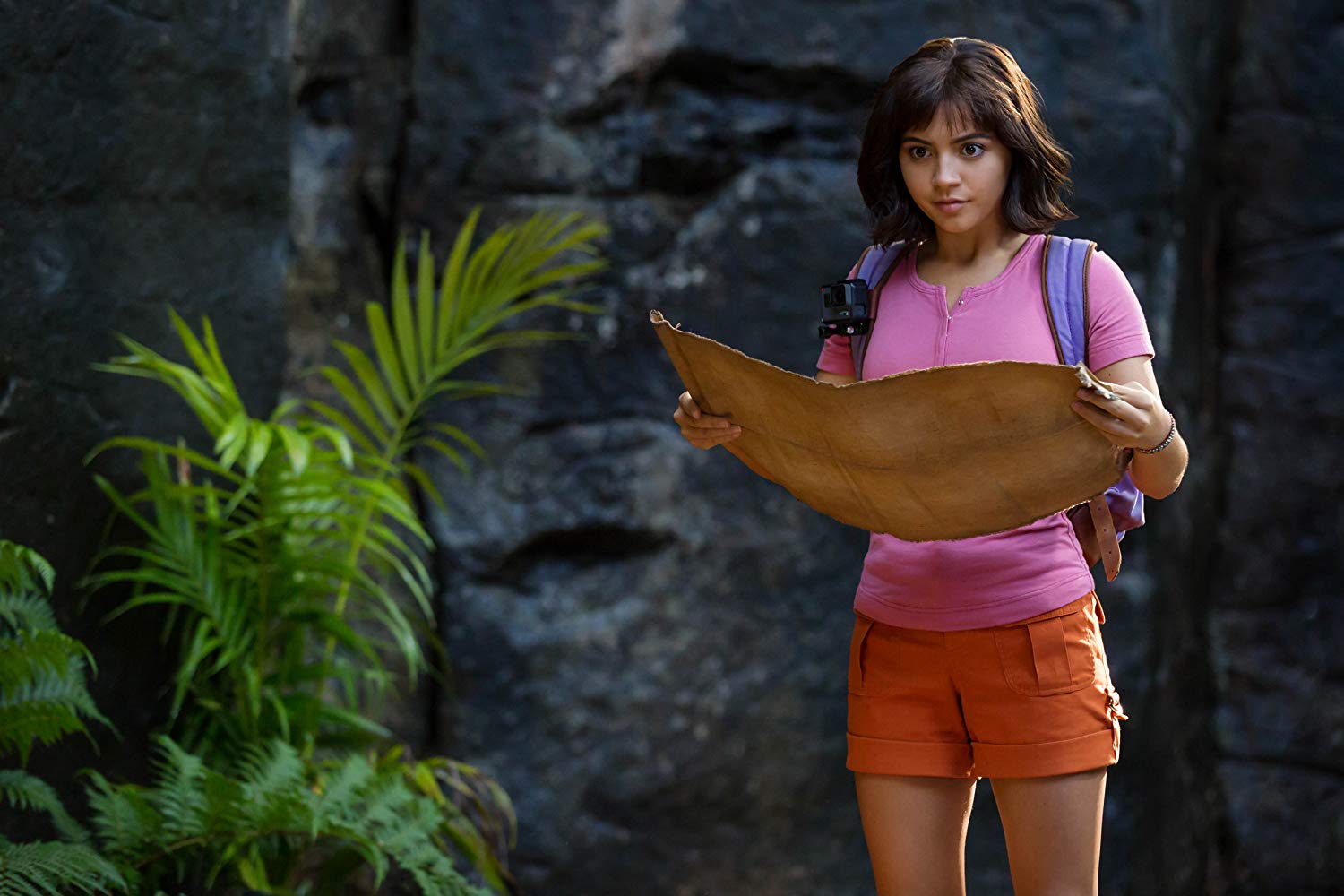The live-action Nickelodeon movie ‘Dora and the Lost City of Gold’ opens this weekend, telling the story of the popular fictional character from the animated educational series ‘Dora the Explorer.’
Dora is an optimistic and outgoing teenager girl who has spent her entire life in the South American jungle.
She’s played with snakes. She’s talked to monkeys. She’s swung from branch to branch, exploring everything there is to see. She loves it there.
But things are about to change. Her mother gets a new job. And then Dora moves to an environment—California—she doesn’t recognize or understand. And then she enters high school, a cynical place where teenagers definitely don’t share her bubbly outlook on life.
Will Dora be able to influence her high school classmates for the better? Or will her classmates change her?
The live-action Nickelodeon movie Dora and the Lost City of Gold (PG) opens this weekend, telling the story of the popular fictional character who is best-known from the animated educational series Dora the Explorer. It stars Isabela Moner (Instant Family) as Dora, Eva Longoria (Dog Days) as her mother and Michael Peña (Ant-Man series) as her father.
The movie follows Dora as she navigates high school—going to class (she loves literature), eating in the cafeteria (mac & cheese is her favorite) and dancing awkwardly at the school dance—before she and three classmates are kidnapped and taken back to South America. It seems Dora’s parents knew the location of a lost city of gold, and the bad guys want Dora to lead them to her mom and dad.
Dora and the Lost City of Gold includes elements from several great films: the hilarious naivety from Elf, the contagious optimism in Paddington, and the history-based exploration from Raiders of the Lost Ark. It’s a clean version of Jumanji: Welcome to the Jungle (which I didn’t like).
It also provides girls a great role model who has multiple qualities I’d want my daughter to emulate.
Yes, the film is quirky and even goofy at times, but it’s a funny and mostly family-friendly film that my two oldest children (ages 11 and 7) enjoyed.
Warning: minor/moderate spoilers!
(Scale key: none, minimal, moderate, extreme)
Violence/Disturbing
Minimal. Teenagers are kidnapped in a crate and taken to South America on a plane. Dora and her classmates are chased and shot at with darts. They get stuck in quicksand. They nearly drown, and they think they’re going to die. They’re nearly killed again in a temple when the walls close in on them and a ceiling with sharp points collapses. But nothing is graphic, and comedy is just beneath the surface of every scene. It would disturb only the most sensitive children. Most older kids and tweens would consider it tame.
Sexuality/Sensuality/Nudity
Minimal. Two teenagers kiss (Dora’s not one of them). We hear discussion of animals mating.
Coarse Language
Minimal. Two barely heard OMGs. Two instances of “gosh” and two unfinished “what the.” Four instances of “shut up.” The rest of the language involves name-calling: “disco Dorka” and “Dorka,” for example.
Other Positive Elements
Dora loves her parents, and they love her, too.
Dora is the type of female role model few films offer. She optimistic. She’s encouraging to others. She sees the best in people. She’s humble. She’s a leader who learns. Eventually, she wins over her friends. It’s also worth noting that the film doesn’t sexualize Dora, as happens too often in Hollywood movies.
Other Stuff You Might Want To Know
Dora dances, but not inappropriately (It’s so goofy it embarrasses her cousin, Diego).
She and her friends get stuck in quicksand, resulting in sounds that emulate the sound of flatulation.
Her female classmate, Sammy, uses the restroom in the jungle. Dora helps by digging a hole and inventing a song about making a “poo hole” in the ground.
Life Lessons
Optimism is infectious: Dora was ridiculed in school for her cheery personality, but it influenced everyone for the better. The contrast between her and her snobby classmates is striking. Who would you rather hang out with? The answer is obvious.
Bullying is ugly: We briefly see a student shoved up against the lockers. We hear Dora called several ugly names for her intellect and background. The bullies were trying to be cool. Ironically, through, they were the ones who looked foolish. Proverbs 18:2 says: “A fool takes no pleasure in understanding, but only in expressing his opinion.”
Everyone needs encouraged. Dora grows discourages a couple of times. Her friends, especially Diego, cheer her up.
Worldview
The plot involves Incan traditions and myths that turn out to be true. We watch an elderly woman transformed into a young queen. We hear discussion of Incan gods. When things go bad, the queen tells everyone that the gods were “angered.” We watch Dora appease these gods by restoring a statuette to its original location.
What Works
Isabela Moner as Dora. She’s marvelous. The humor stays in the family-friendly realm, even if it does include discussions of “poo.”
What Doesn’t
Some of the humor is awkward.
Discussion Questions
1. Do you enjoy being around people like Dora? Why or why not?
2. Name five positive characteristics of Dora. Which characteristic do you need to emulate?
3. What is the key to stopping bullying?
4. Why are cliques so popular? Are cliques biblical or unbiblical?
5. Dora says if “you believe in yourself, anything is possible.” Is that true?
Entertainment rating: 3.5 out of 5 stars. Family-friendly rating: 4 out of 5 stars.
Rated PG for action and some impolite humor.
